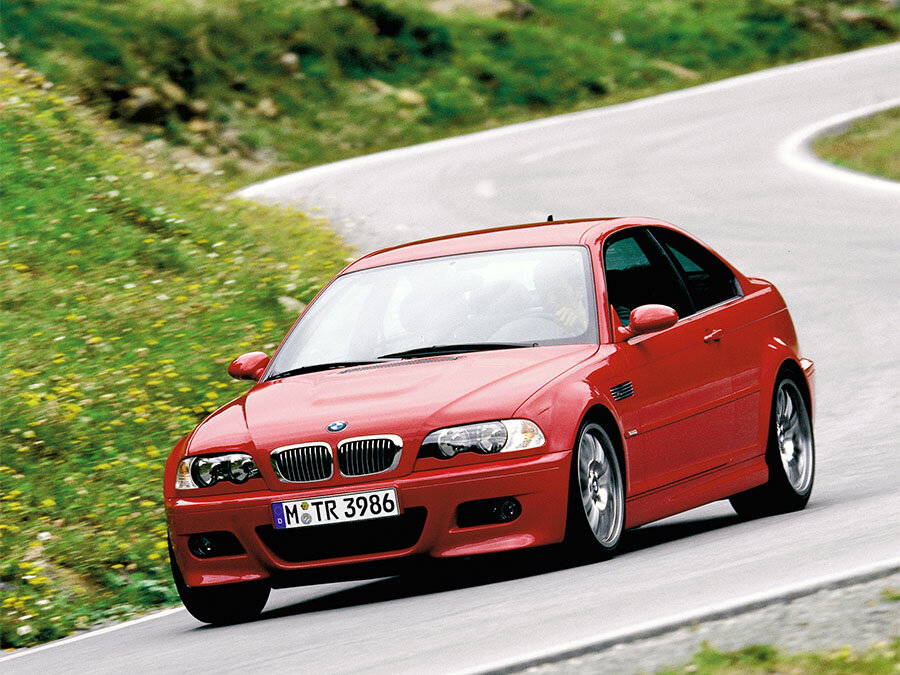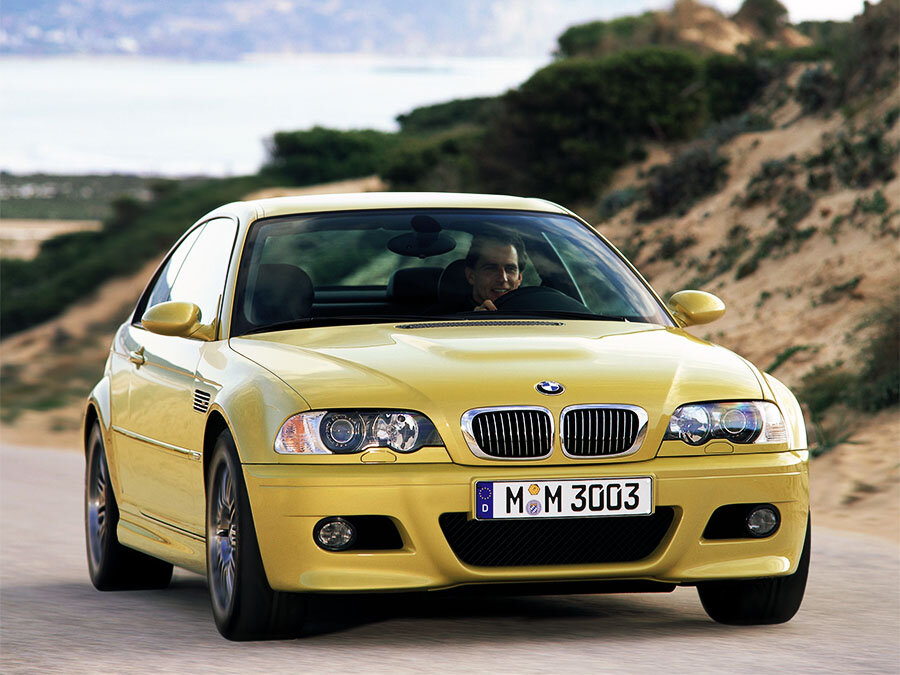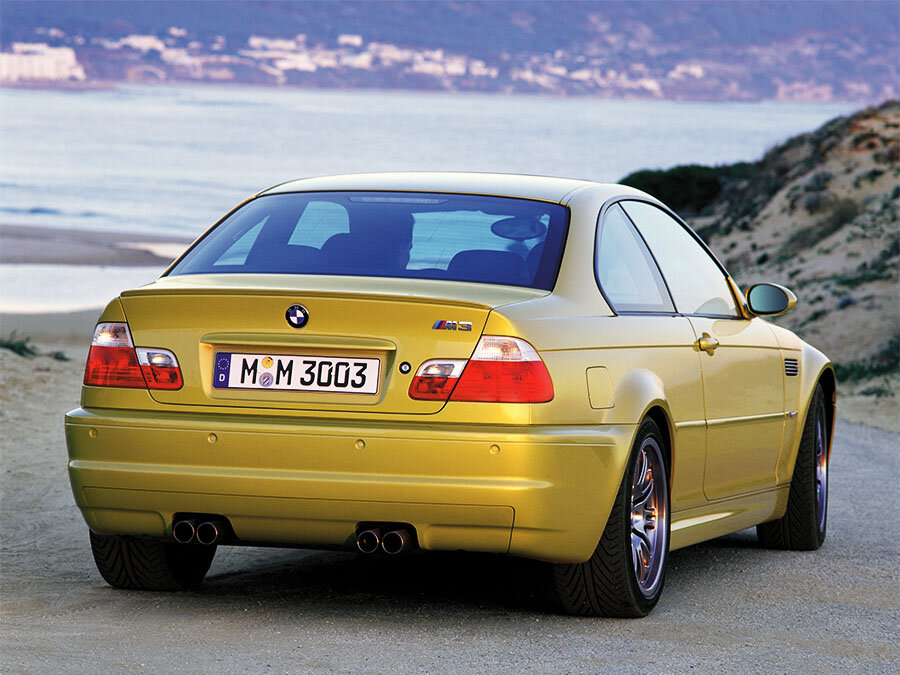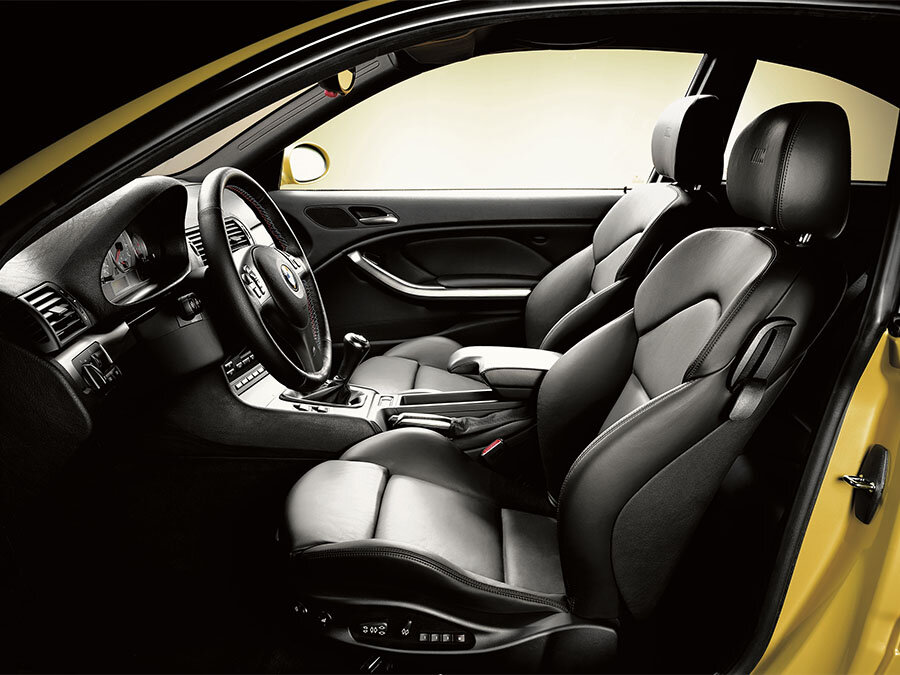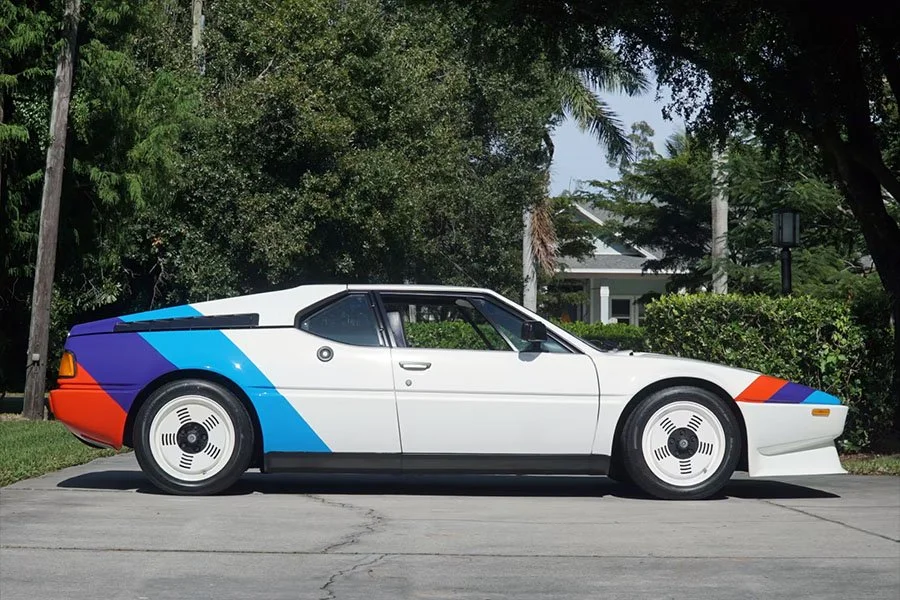Guide: BMW E46 M3 - a Historical & Technical Appraisal
/BACKGROUND
Following the critical, commercial and sporting success of the E30 and E36 M3s, it was inevitable that BMW would follow up with a Motorsport version of the E46.
The M3 programme originally began as a means to homologate a Group A competition version of the E30 for use in touring car racing and rallying.
The E30 M3 was powered by a raucous four cylinder engine and was only available in left-hand drive. Towards the end of production, a Convertible version was added to the range, but less than 800 of the circa 18,000 E30 M3s built were completed as such.
16 months after the last E30 M3 had rolled off the production line, BMW replaced it with an E36 variant.
A larger and more refined vehicle, the straight six-powered E36 M3 was not created for homologation purposes and, thanks to its broader appeal, was built in vastly greater numbers. Around 70,000 had been completed in Coupe, Convertible and Saloon body styles by the time production was discontinued in 1999.
The E36 M3’s popularity was also boosted by the addition of a clutchless manual / fully automatic SMG gearbox offered from 1997.
The standard E46 3-series had already been introduced when the last E36 M3s were still being built. Series production began in December 1997 after the E46 had been publicly unveiled at the Frankfurt Motor Show three months earlier. The four-door E46 Saloon was followed by a two-door Coupe in December 1998, a five-door Estate from January 1999, a Convertible from December 1999 and a Hatchback from April 2000. Inline four and six cylinder engines were offered from 1.6 to 3-litres. Petrol and diesel motors were also produced.
A prototype of the highly anticipated E46 M3 was displayed at the Frankfurt Motor Show in September 1999. The production version was then unveiled at Geneva in March 2000.
Construction began in September 2000. Assembly took place on the normal 3-series production line at BMW’s Regensburg factory near Munich.
The M3 Coupe was joined by a Convertible from February 2001. However, unlike its predecessor, the E46 M3 was never available as a Saloon. A single Touring variant was created in 2000 but, unfortunately, never got approved for production.
CHASSIS
This latest M3 followed the same trusted formula of an uprated engine and chassis with a series of sporty exterior and interior enhancements.
It was based around the standard E46 pressed steel bodyshell which BMW claimed was 70% more rigid than that of the outgoing E36. At 2731mm, the wheelbase was 31mm longer than its predecessor. As usual, a rear-wheel drive layout was employed. Weight distribution was 50/50.
Compared to standard E46 Convertibles, the M3 variant came with a beefier front subframe.
To reduce unsprung mass, aluminium was used for an increased quantity of suspension components on all E46 3-series’.
MacPherson struts were used at the front while at the back was a multi-link configuration.
The M3 was uprated with a variety of parts developed by BMW Motorsport.
Stiffer springs and dampers were installed along with thicker anti roll bars (26mm at the front, 21.5mm at the rear). The top springs and shock absorber mounting points were modified along with the rear suspension links which now came with steel ball joints instead of rubber bushings.
There were special forged alloy lower control arms plus custom bearings and bushes and a thicker aluminium thrust plate. Larger half shafts and wheel carriers were also installed.
The cross-drilled and vented brake discs had a 325mm diameter at the front and 328mm diameter at the rear. The discs featured a two-piece design where the aluminium hat was connected to the outer portion of the disc via steel pins. The idea was to reduce disc deformation under heavy braking.
Single piston sliding calipers were fitted all round and ABS was standard.
18-inch M Double Spoke II alloy wheels were given a Satin Chrome finish. The fronts were 8-inches wide and the rears were 9-inches wide. Track dimensions were considerably greater than any other E46 3-series.
A 63-litre fuel tank was located underneath the rear seat.
ENGINE / TRANSMISSION
At the heart of the E46 M3 was the ultimate evolution of the straight six engine that first appeared in the E36 M3. It featured a cast-iron block and light alloy twin cam head with four valves per cylinder. Wet-sump lubrication was once again employed.
The S54 power unit fitted to the E46 M3 was enlarged from 3210cccc to 3246cc. This was achieved by taking the bore from 86.1mm to 87mm while the stroke remained at 91mm.
Other enhancements included uprated camshafts, finger-type rocker arms instead of bucket-style tappets (for reduced reciprocating mass), a light weight one-piece aluminium head and a scavenging pump to avoid oil starvation during hard cornering. The high pressure Double Vanos variable valve timing system was modified to provide faster operation at high revs.
Additionally, the compression ratio was increased from 11.3:1 to 11.5:1.
Engine management was courtesy of the new BMW-Siemans MSS54 system.
Electronic throttle control offered two M Dynamic Driving Control modes: Normal and Sport.
Peak output was 343bhp at 7900rpm and 262lb-ft at 4900rpm. For comparison, the outgoing 3.2-litre E36 M3 Evolution produced 321bhp at 7400rpm and 258lb-ft at 3250rpm.
Transmission was via a Getrag 420G six-speed manual gearbox, a single-plate clutch and BMW’s M Variable Differential Lock.
The M Variable Differential Lock was an advanced version of a conventional limited-slip differential. When a difference in rotational speed was detected between the rear wheels, a viscous silicon fluid was pressurised which operated a multi-disc clutch that distributed more power to the wheel with the greatest traction.
BODYWORK
As had been the case with the E30 and E36, the E46 was arguably the best looking mid-size executive model on the market. However, a new rival had recently emerged in the shape of the handsome new Audi A4 which a number of BMW customers switched to.
The M3 was undeniably the most macho-looking car in the E46 range. It came with a number of cosmetic enhancements, the most noticeable of which were four heavily flared wheelarches to cover the wide new wheels and tyres.
Also down each flank were unique engine cooling vents, custom side mouldings with integrated turn signals, deep side skirts and aerodynamically-styled wing mirrors.
More aggressive bumpers were fitted at either end. The front bumper featured enlarged openings to maximise cooling and a deep front spoiler. The rear bumper was re-profiled to accommodate a four outlet exhaust.
The M3’s aluminium hood was given a distinctive power bulge and wider kidney grilles.
Clear turn signals were fitted all round.
INTERIOR
Inside, the familiar E46 dash was retained albeit with a few little tweaks here and there.
The main binnacle housed a 300kmh / 180mph Motorsport-branded speedometer and combined 9000rpm tach / water temperature gauge. Smaller read outs for fuel and oil temperature were located on either side and a bank of warning lights were positioned underneath. Red needles were used throughout.
The Motorsport-branded three-spoke leather steering wheel featured tri-colour stitching. It also came with a selection of buttons to activate various functions. Speed-sensitive power steering was standard.
Other special equipment unique to the M3 included M Design front sports seats, an illuminated Motorsport-branded leather shift knob and door sill plates with the M3 logo.
Leather upholstery was standard along with electric windows, electric mirrors and remote central locking.
Customers could choose from a variety of exclusive upholstery combinations and there were also a unique selection of trim inserts.
OPTIONS
Optional extras included forged 19-inch M Double Spoke II wheels that were half an inch wider at the rear.
BMW also offered parking sensors, a sunroof, Xenon headlights, a green tinted windscreen and metallic paint.
Interior upgrades included a TV display, satellite navigation, Bluetooth preparation, various audio systems, heated front seats, two-tone upholstery, rain-sensing wipers, power side bolsters for the front seats (Coupe only), a front armrest, three rear head rests, a sunblind for the rear window, an alarm, rear side airbags and a Hardtop (Convertible only).
WEIGHT / PERFORMANCE
The E46 M3 Coupe weighed in at 1570kg while the Convertible was 1655kg.
Both cars were electronically limited to a top speed of 155mph.
The Coupe had a 0-62mph time of 5.2 seconds while the Convertible required 5.3 seconds.
SMG II GEARBOX
In March 2001, BMW added their Sequential Manual Gearbox II (SMG II) to the options list.
This second generation SMG gearbox used an electro-hydraulically actuated clutch and offered gear shifting via either the gear lever or the paddles mounted on the steering wheel.
It used the same gears and ratios as the standard manual with automatic clutch and gear engagement operated by BMW’s Drivelogic software. Eleven different programmes were provided (six in sequential driver-operated mode and five in fully automatic mode).
There was also a Launch Control function that provided optimised shift times for the fastest possible acceleration from a standing start.
Right-hand drive cars were available with SMG II from June 2001 and US variants from September 2001.
EARLY PRODUCTION CHANGES
September 2001 also marked the arrival of optional Bi-Xenon headlights and a larger 6.5-inch monitor for the satellite navigation / audio system. Radio presets were added to the Car and Key Memory functions and the Black High Gloss interior trim package was replaced by Titan Shadow.
In March 2002, a front strut brace was added to all M3s.
E46 M3 30 YEARS OF BMW M EDITION
Around the same time, BMW introduced a special edition for the German market.
Dubbed ‘30 Years of BMW M’, three batches of ten cars were built. Each batch was finished in a custom colour scheme, either Imola Red II with two-tone Imola Red and Black upholstery, Estoril Blue Metallic with two-tone Estoril Blue and Black upholstery or Velvet Blue Metallic with two-tone Ink Blue and Black upholstery.
Extended Nappa leather upholstery was standard along with the SMG II gearbox. An electric sunroof, Bi-Xenon headlights, parking sensors, heated front seats and a Harman Kardon audio system were also bundled in. Cockpits were enhanced with Anthracite Birch wood inserts while outside, BMW fitted high-gloss Shadowline trim.
LATER PRODUCTION CHANGES
From September 2002, BMW added a brushed aluminium interior trim option. The DVD-based navigation system with in-dash CD player was replaced by a CD-ROM version.
From March 2003, LED adaptive tail lights were introduced. At the same time, Mystic Blue Metallic paint replaced Topaz Blue Metallic and Silver Grey Metallic replaced Steel Grey Metallic.
Between June and December of 2003, BMW produced a lighter, more powerful, driver focused M3 CSL (covered separately). 1383 customers CSLs were built, all of which originally came equipped with the SMG II transmission.
In September 2003, a Bluetooth phone interface was introduced.
One year later, Laguna Seca Blue and Oxford Green Metallic were discontinued.
E46 M3 SILVERSTONE EDITION
In late 2004, another special edition was introduced, this time for the UK market.
The M3 ‘Silverstone Edition’ was a batch of 50 customer cars, all of which were painted Silverstone Metallic and equipped with 19-inch forged M Double Spoke alloy wheels.
Interiors were configured with Dark Estoril Blue extended Nappa leather upholstery, a Harmon Kardon audio system, satellite navigation, Aluminum Cube trim and black floor mats with Dark Estoril Blue leather edging.
Of the 50 examples built, 30 were manual and 20 came with the SMG II gearbox.
COMPETITION PACK / CLUB SPORT
In December 2004, BMW introduced an optional Competition Pack. The Competition Pack was only available on the Coupe and, in the UK, was referred to as the Club Sport variant.
Included among the upgrades were the 345mm front discs, a quicker steering rack and 19-inch cross-spoke alloy wheels from the CSL.
Inside, BMW fitted special milled aluminium effect trim and an Alcanatara steering wheel. Instead of buttons for the audio system and cruise control, the steering wheel was equipped with an M Track Mode activation button for the Dynamic Stability Control which was re-tuned to intervene at a higher threshold than before.
Competition Pack / Club Sport buyers could also request a special Interlagos Blue Metallic paint option.
FINAL PRODUCTION CHANGES
From December 2004, the M3’s suspension was revised to reduce understeer.
In March 2005, BMW dropped Phoenix Yellow Metallic.
USA VERSION
The E46 M3 sold in the USA was, in specification terms, far closer to its European counterpart than either the American E30 M3 or E36 M3 had been.
It came with conventional single-piece brake discs and the catalytic converters were moved closer to the engine block. This enabled the cats to more quickly move up to operational speed and thus minimise cold-start emissions. The result was a 5bhp reduction in peak power.
Additional sidelights were also fitted to US-bound derivatives.
US versions followed the same pattern of upgrades as rest of the world cars. However, in addition, rain-sensing wipers, automatic headlight control and an in-dash CD were made standard from September 2001. The optional 19-inch wheels were offered from March 2002.
PRODUCTION
In total, 84,383 customer M3s were delivered between September 2000 and August 2006.
Production totals were split as follows:
LHD Coupe: 16,038 examples produced from 09/2000 through 05/2006 (7800 with SMG)
RHD Coupe: 12,510 examples produced from 02/2001 through 05/2006 (5855 with SMG)
USA Coupe: 26,202 examples produced from 02/2001 through 05/2006 (10,851 with SMG)
LHD Convertible: 4822 examples produced from 02/2001 through 08/2006 (3039 with SMG)
RHD Convertible: 7234 examples produced from 04/2001 through 08/2006 (3754 with SMG)
USA Convertible: 17,577 examples produced from 03/2001 through 08/2006 (8796 with SMG)
Text copyright: Supercar Nostalgia
Photo copyright: BMW - https://www.bmw.com
